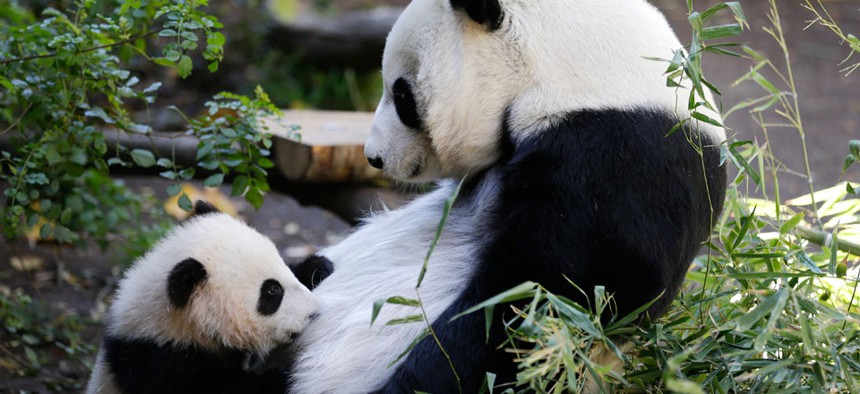Biofuel Researchers See Promise in Panda Dung

Xiao Liwu, a 5 1/2-month-old male panda, below, nurses as his mother, Bai Yun, above, looks on at the San Diego Zoo. Gregory Bull/AP
The microbes in the guts of these gentle giants could make alternative fuel production so much easier.
Pandas are stupid. They are amazingly bad at sex. They're fat, lazy, and poop way too much – up to 40 times a day.
Well, guess what, panda haters: In regard to that last point, panda dung could be the very thing that saves civilization from wars, famines, and doom.
Bear with me here. As the planet creeps closer and closer to depleting its petroleum stocks, scientists are scrambling to find alternative fuels to keep machines humming and governments secure. One promising energy source is ethanol made from converted organic matter. Manufacturers can whip up big vats of this vital fluid by fermenting crops grown around the world, such as corn, sugarcane, and soybeans.
There's a problem with that strategy, though: It makes food more scarce and drives up the prices at the grocery store. Refineries can use inedible or "garbage" organic matter to make ethanol, like switchgrass and corn cobs, but doing so involves more expensive and tedious methods. That's because the stringy, tough lignocellulose in this unpalatable stuff cannot be fermented, and must undergo conversion processes that can involve high temperatures, high pressures, and slow and unstable catalysts.
Enter the giant panda, or rather what comes out of the giant panda. Evolution has honed these monochrome mammoths into four-legged garbage disposals for bamboo. Their guts are teeming with microbes that attack woody cellulose and break it down in no time flat. If biofuel makers had that kind of technology at their fingertips, turning corn husks and wood chips into ethanol would be so much easier.
NEXT STORY: The Downside of Transparency





